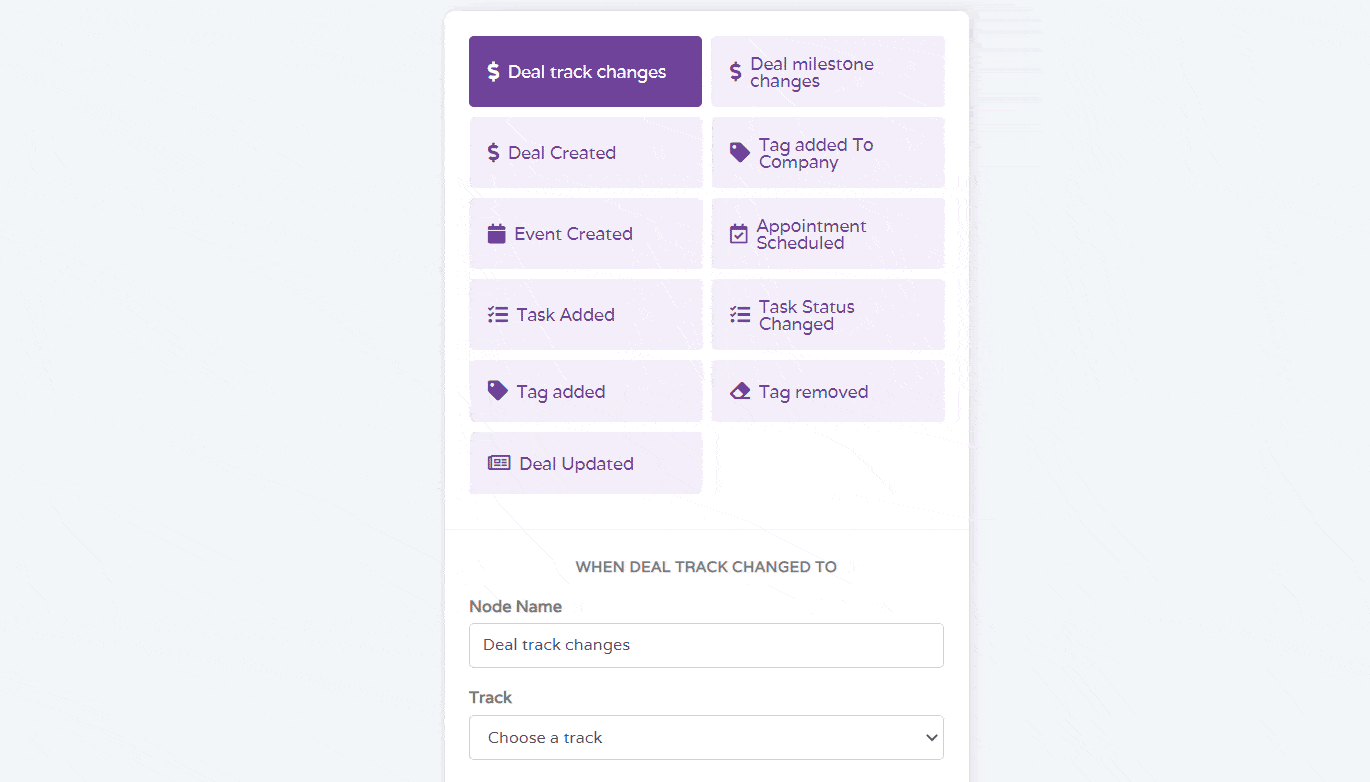Do you run a sales team? Have you ever wondered if your marketing and sales goals should align with each other? The answer is a yes.
Aligned teams not only work better but also help increase productivity and revenue. Unfortunately, almost 78% of B2B companies have reported a misalignment between their sales and marketing teams.
As a result, many such organizations have lost a whopping 10% of their annual revenue.
Sales and marketing alignment, also known as ‘smarketing’, refers to a shared system of communications, goals, and strategies that enable sales and marketing teams in companies to work in unity.
The objective of sales and marketing alignment is to acquire high-quality leads and drive sales.
In this infographic article, we are going to show you the benefits of sales and marketing alignment, why the misalignment happens, and how you can successfully align these two departments.
Table of Contents
Sales and Marketing Alignment Infographic

Why Is It Important to Align Your Sales and Marketing Teams?
I hope the infographic conveys why the alignment of sales and marketing teams is crucial. Earlier, sales and marketing teams used to work in ‘silos’ or segmented from each other.
While marketing teams used to work at the top of the sales funnel, sales teams took care of the bottom. Once leads were identified by the marketing department, they were passed on to the sales personnel.
However, the process is not so simple anymore.
Today, clients begin to interact with a brand much before they make a purchase and way after a deal closes.
If sales and marketing teams continue to work in isolation, it would result in miscommunication that results in lost leads and sales. In fact most of the time, it also impacts the relationship with your customers due to inefficiency between the departments.
All these factors would cause a decline in sales revenue. Many companies have even reported a loss of more than a trillion dollars every year due to a misalignment between their sales and marketing teams.
Read also: Revenue vs Profit: A Simple Explanation of Income
Why Does Sales and Marketing Team Misalignment Happen?
Besides a segmented work environment, there can be multiple reasons why your sales and marketing teams are misaligned.
Let us understand some of them.
#1. Poor Communication
Traditionally, sales and marketing teams worked separately. There was little to no communication between them.
However, today, the role of marketing and sales does not end with a customer placing an order.
To retain customers and generate more sales, teams need to do much more, including lead nurturing, determining high-quality leads, handling inactive or cold leads, and offering attractive deals or complementary products.
In the case of poor communication, a company would fail to achieve these goals.
This is because sales teams wouldn’t know how marketing teams generate leads, while marketing teams wouldn’t be aware of how to nurture leads or what a high-quality lead looks like.
#2. Flawed Processes
Today, customers begin interacting with a brand way before they make a purchase and continue to do so post-sales.
Factors such as good after-sales service, upselling, and cross-selling, help build brand loyalty and convince clients to make repeated purchases.
If sales and marketing teams don’t come up with ways to ensure that shoppers want to buy again, they not only risk losing brand reputation but their customer base as well.
#3. Inconsistent Follow-Up
Misalignment not only leads to a lack of clarity on what is expected of sales and marketing teams but also results in inconsistent follow-ups between the two.
Since there is very little communication between the two departments, it can cause miscommunications in terms of the number of leads identified and captured, and those that were converted.
Further, inconsistent follow-ups can also result in lost leads or nurturing less qualified leads, which can cause a loss of revenue and wastage of time and resources.
#4. Different Measurement Metrics
When there is little to no coordination between the sales and marketing teams, each department tends to have different metrics to measure success.
While a marketing team may consider lead capturing as its primary objective, sales teams may consider the identification and conversion of high-quality leads as a measure of success.
As a result, the marketing team may even pass a low-quality lead to the sales teams even before they are nurtured properly.
This will only result in low conversion, asking the sales team to pass the lead back to the marketing team. This to and fro of the leads ends up reducing efficiency and wasting resources.

Benefits of Sales and Marketing Team Alignment
Here are some of the advantages of an integrated all-in-one solution for your business.
#1. Seamless, Account-Based
The alignment of sales and marketing teams ensures seamless account-based solutions.
Account-based solutions, or account-based marketing, is a focused growth strategy that involves sales and marketing teams collaborating to create a highly personalized experience for their customers.
It helps attract qualified prospects and outlines how they would progress through the different stages of the sales funnel.
What’s more, it also helps you identify any frictions and address them immediately.
#2. Single Point Solutions
When you implement ‘smarketing’ in your organization, it helps provide single-point solutions to challenges within the organization.
A single-point solution is a method to help organizations tackle a single-use case or challenge, allowing them to focus on specific goals. It brings a level of expertise that is typically missing from an all-encompassing solution.
In essence, using single-point solutions can help address a particular problem quickly, saving time and costs.
#3. Unified Data

Alignment of sales and marketing requires a centralized or unified database.
With a unified database, both the sales and marketing teams are aware of the various stages of a sales cycle.
This includes information on where they are on their target goals, what leads have been generated, and what more can be done to nurture those leads.
Moreover, if the sales team believes that the leads need to be nurtured further, they can be sent back to the marketing team.
All these steps become easier when there is a single platform where all the communication is done.
This also enables employees to not wait for approvals or for someone to provide them with the required information.
#4. Flexibility
A key advantage of aligning your sales and marketing teams is that it provides flexibility.
Since both the teams are working towards a common goal, they can collaborate as well as allow for shared responsibilities.
Sales personnel can take charge of marketing while marketing representatives can contribute to sales strategies.

#5. Strategic Thinking
When both the marketing and sales teams work together, it can lead to more effective and strategic thinking.
When they share a common objective, the two teams can brainstorm together on various collaborative marketing and sales campaigns that can help achieve goals faster and more efficiently.
#6. Saved Time
With a unified platform and access to a centralized database, there is no miscommunication or friction in the flow of information between the departments.
Besides, they can collaborate in real-time, allowing them to take fast decisions and implement things without any delay.
It results in increased productivity and efficiency at work.
#7. Easier Management
When there are common goals, it becomes easier for managers to keep a track of their team’s performance.
Implementing ‘smarketing’ strategies enables managers to identify any bottlenecks in their strategy and how these strategies can be further improvised to yield better results.
Besides, managers can keep track of each individual performance and see how they are contributing to the goals. They can identify if any team member is underperforming and address it accordingly.
#8. Consistent Support
When marketing and sales teams align, it allows for consistent support from both sides.
This is because the teams are working together rather than working against each other. And with a shared objective, they can help each other reach their goals faster, and overcome any hurdles or issues.
#9. Provable ROI
An important benefit of aligning your sales and marketing teams is that it helps you create a provable ROI.
As both departments have the same goal in mind, it becomes easier for them to know what targets need to be achieved, how they need to be executed, and the revenue and profit it would generate.

#10. Reduced Costs
Sales and marketing alignment helps reduce costs, as teams do not have to go back and forth, in terms of communication.
Marketing teams are aware of what leads they need to identify and capture, while sales teams know how to convert those leads.
There is no wastage of resources or friction due to the incomplete flow of information.
#11. Enhanced Compatibility
When both the marketing and sales team have a shared objective, it results in enhanced compatibility between them.
They tend to work together effectively and address any problems with their strategies.
#12. Complete Transparency
In the absence of alignment, sales and marketing teams are in the dark about the work done.
They are not aware of how marketing teams are generating leads or how sales teams are convincing people to make purchases.
With alignment, however, both sales and marketing teams become accountable to each other.
They can identify what bottlenecks the company is facing if there are issues with the sales and marketing campaigns, and what can be improved.
Here are some stats that show the benefits of marketing and sales team alignment:
- It reduces friction by 108% and generates 209% more company value through marketing.
- It is also seen that it can increase customer retention rates by 36%.
- Alignment has helped increase sales win rates by 38%, increased three-year profit growth by 27%, and speeds three-year revenue growth by 24%.
- 78% of companies also reported becoming better at closing deals once their sales and marketing teams were aligned.
Steps to Successfully Align Your Sales and Marketing Teams
Here are some of the best practices you can follow to successfully implement ‘smarketing’ within your organization.
#1. Communicate, Build Camaraderie, And Gain Top-Down Support
The first step to aligning your sales and marketing team together is through effective communication. It is crucial to create trust between the two teams and ensure a smooth communication process.
To do so, the teams should build camaraderie between themselves and gain top-down support. This assures the teams that they both are working towards a common goal and hence, need to collaborate than work in isolation.
#2. Review Technology Usage and Optimization Strategies
Before you start creating a plan to align your sales and marketing departments, it is important to take into account technology usage.
Determine whether the software or CRM platform in use meets your organization’s needs or not. Is it compatible with both departments? Does it promote easy collaboration?
The application in use should enable workflow automation and automate the repetitive or time-consuming aspects of the sales and marketing process.

#3. Align Around the Same Metrics
One of the major reasons behind misalignment is the difference in measurement metrics.
While your marketing team might measure its success in one way, the sales team may use other metrics. To ensure that both teams are on the same page, it is important to align their metrics.
These metrics could range from acquiring high-quality clients to generating higher sales or maximizing profits.
#4. Become a Data-Driven Organization
To make sure that your sales and marketing personnel are fulfilling the company’s objectives, start off by becoming a data-driven organization.
Becoming data-driven implies creating quantifiable goals rather than setting vague targets.
This way, your employees know what targets they need to achieve, so they can design and implement the right strategies.
Conclusion
The benefits of sales and marketing alignment are not limited to the ones mentioned above. In fact, the use of marketing in your revenue growth strategy can result in highly qualified leads, effective nurturing, and increased transparency.
All these ultimately affect your overall organizational success, leading to a greater ROI and a happy work environment.
If you want one software that can help you do it all from lead generation to closing deals and even customer service, try EngageBay. With an award-winning and top-rated tool like this, you can’t possibly go wrong.


